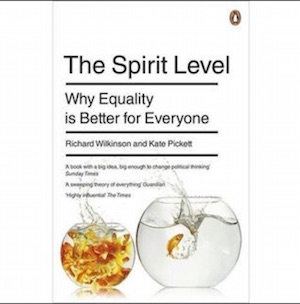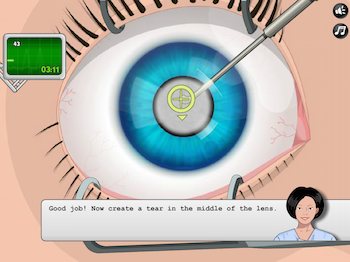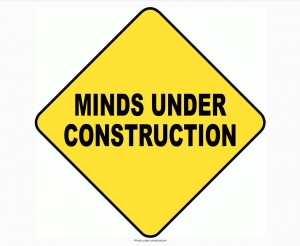A Touch of Innovation:
Dr Jim Stikeleather, Dell Services Champion of Innovation spoke at
Launch of a new Innovation Executive Breakout Programme in
Trinity College Dublin, 22nd October, 2014
“An Ideas Factory”
Dr Barry McMahon, introducing Dr Stikeleather, talked about the concept of an “ideas factory” – where ideas are the input and innovation is the output. Innovation can be in the form of products, services and processes.
He noted that children are born innovators, and yet innovation in the adult population is limited. Barry explored the reasons for this:
- Fear of Failure
- Fear of being thought of as stupid
- Not able to follow through because of business and distraction
- Fear that the idea will not be accepted by staff or colleagues
- The idea might be your big secret, the one you know would have been better than everyone else’s.
Dr McMahon said,
We need to reclaim our creative confidence, it’s about using tools to design thinking and using building blocks to create: education, work, the regulatory system.
Barry’s suggested inputs into the Ideas Factory are:
- New multidisciplinary collaboration
- New networks
- New Tools
- Start small, think big
- Lead by example
- Review and change organisational culture to drive rapid innovation.
Dr Jim Stikeleather
Stikeleather has over 25 years of experience in ICT design for business and he sees the future very much in the hands of business process innovations.
He began by asking the audience to consider waking on a morning when all the things that had brought you success were gone. It would be scary but it would be the ultimate opportunity to innovate:
- New products and services
- Re-invent old products and services that are not working any more, or get rid of them
- Develop new business, operational and management models
– it would be a brave new world.
Now there would be new multi-disciplinary workgroups, new networks, the market would be disrupted. It would be simultaneously exciting and scary.
This would be an opportunity to assemble our capabilities and resources, to transform old ideas into new value.
Dell – Taking Stock
Stikeleather has worked with Dell for 4 years. He is a serial entrepreneur who has failed several times but succeeded many times.
Dell was in trouble and had to change what it was doing. So Dell analysed Dell and Dell analysed society, working with many different groups including Harvard Business Review and Forbes to diagnose the fault in Dell.
They found that the big change in business was that employees were living by a “Bring your own device” model, and with this comes many challenges.
Stikeleather said that for hundreds of years, the purpose of a company was to create new customers and to achieve efficiency.
But the reality of business is that there are high process costs which are not related to the product. So the priority then becomes about assembling new capabilities and resources into new forms of value and that requires efficacy and innovation. This falls into the area of disruptive innovation.
According to Stikeleather, there are five pillars of disruption:
1. The nature of capitalism
Capital is becoming democratised, for example the Grameen Bank (see blog https://nextgenerationnotions.wordpress.com/ ).
There is a new definition of value. Until about two years ago, the focus of commerce was on Return on Investment (ROI). About that time, the Harvard Business Review had an article saying that ROI is like a peacock’s tail feathers, where evolution has made the trophy of the tail feathers a hindrance in every day life, this is an unintended consequence. The peacock can no longer survive in the wild, can ROI continue as the driver of commercial decisions. Stikeleather and Meyer and Kirby (2012), say not, in fact there is a new definition of value: social investment.
2. A realisation that we cannot do everything any more.
A single business with many specialties cannot fulfill every function. Stikeleather posed the following three questions:
- This minute, am I creating value for my customer?
- Am I the best in the world at doing this?
- Am I doing this for regulatory reasons?
Stikeleather says if you answer no to any of these questions, then it is time to consider splitting the company.
3. Disruptions, especially technological enable other disruptions across the elements of time, space, information and access.
We are all aware of the rate of change of technology and the world it touches on a daily basis.
4. Economics
Our fundamental assumptions are wrong. That is, our assumptions around supply and demand might be wrong because we have assumed that decision makers are rational, but they may not be, especially if we consider the approach of the ROI investor.
– Mathematicians are now involved in Business
System scientists are developing system economics, they are challenging old models of economics.
Economics emerges from individual behaviours. We need to simplify this, so that most profit is a function of fiction-transaction costs:
- Information differential between the buyer and the seller (eg access to internet product reviews).
- Access to capital such as micro-lending and Kickstart – ideas no longer depend on banks and venture capitalists.
- Time: changed by the internet – communications can be instantaneous.
- Distance: the internet, technology, logistics, clever distribution chains all lessen the impact of distance – (for example: DHL, FedEx and UPS).
One very easy source of profit is to have a monopoly. A monopoly can arise when a service or product is provided to government which they need but which no one else can offer; a value proposition, based on innovation (and indeed serial innovation) is offered to all when the product, process or service cannot be offered by anyone else.
Stikeleather gave a glimpse of the brave new world we are living in:
- Two men go fishing in a little rowing boat;
- One suggests they can catch more fish by modifying the reels to cast faster and reel in faster;
- They return home, access some open source reel designs on the internet, make some modifications, borrow money from family to get some prototypes made by 3D printing;
- Finalise the design, access funding via crowdsourcing, have the reels manufactured in China, open a shop on Amazon and a month later go fishing in their 40 foot yacht – they are successful entrepreneurs.
e. The final disruption is the change in Management itself.
Business cannot continue to be managed as it was managed in the past.
There is a new work cohort coming in. These people care about what they work on, they care about who they work with but they do not care about whom they work for.
The idea of hierarchical authority is gone.
But businesses are still operating in a way similar to the governance of the Roman Legions – it is time to move on.
Education and business models have contrived to make workers increasingly more expert about more niches so we are moving towards a world where we have more experts who have more knowledge about less and less, we are moving to a stage where we will have lots of people who know lots about nothing.
A second aspect of the changes in management structures needed in our brave new world are around bureaucracy. A great deal of bureaucracy has been born out of an aspirarion to eliminate variability. Bureaucracy with this goal in mind is a good thing.
But innovation is highly variable – and this is the antithesis of what the business environment has become.
Stikeleather spoke about the role of Chinese companies copying products. These companies operate below the legal constraints of patents and employment contracts. Once again they challenge the old ideas, of banks of lawyers and bureaucracy.
What we need is Problem Solving, Creativity, Innovation.
In conclusion, Stikeleather described our brave new world as a world where
- Value is transient
- Value is in the moment
- Value is contextual.
To be a value creator, you must understand the context.
Stikeleather challenged the audience by saying that the 4P’s of Product, Price, Promotion and Position are no longer valid, since everything is transitional, since value is largely based on the repetitional relationship with the customer.
The Key to the future is people.
Machines can do so much but successful innovation needs people.
There is a need to transform volatility to vision, uncertainty to understanding, complexity to clarity, ambiguity to agility, and then vision, understanding and charity will lead to innovation and ultimately a source of profit.
Stikeleather said that as individuals, we may know something we don’t know we know; but there are many things we don’t know we don’t know. And due to complexity and chaos there are things which are unknowable.
People need a new way of sensing what is going on, and the proposed Executive Breakout from TCD can be instrumental in meeting these challenges. Executives need more than the coping skills of the past.
In response to questions:
Stikeleather said he learned most about innovation from one particular entrepreneurial failure in which he was involved.
He suggested there was a need to champion the idea of Just-in-Time education.
Libraries should be a place of knowledge but also discussion, debate and 3D printers.
He said, Failure is a source of innovation
Innovation is a team sport.
When asked if it was possible to teach innovation, Stikeleather noted that all children are innovators, so the challenge is to unlearn the lack of creativity.
Take away message:
To hold influence, you must be clear on what you want to influence and you must become very focussed and resilient;
The current social and economic climate is a perfect environment for innovation and process innovation is as important as any other type of innovation;
Micro-funding and crowd-sourcing, life without bureaucracy and lawyers, 3D printing and Chinese manufacture are all enablers of innovation.
Failure is a badge of honour.
– An interesting, challenging presentation for all those fortunate enough to attend.







